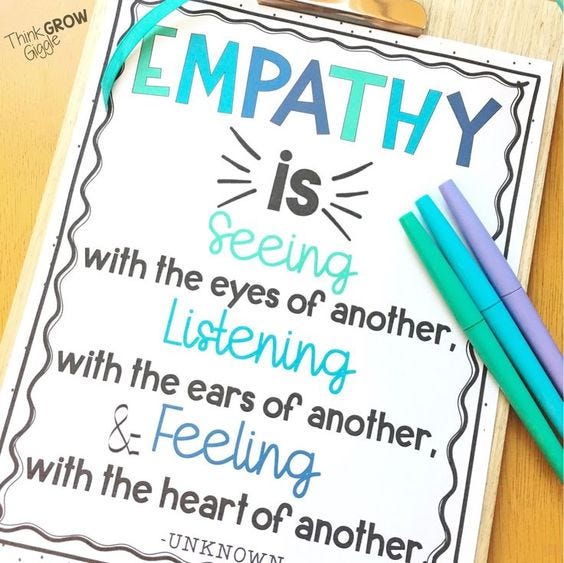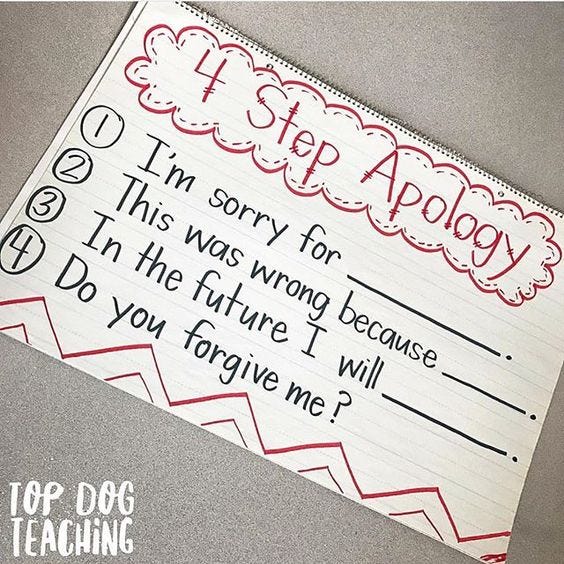John is a disciplined and respectful 10-year-old. He sleeps on time and does his homework without being asked. However, when it comes to sharing toys or helping someone he refuses to do so. He says, “If I can help myself, so can others.”

The value John is struggling to operate with is called empathy. In short, he is unable to move from a “me mindset” to a “we mindset”.
What is empathy?
Empathy is the experience of understanding another person’s thoughts, feelings, and condition from their point of view, rather than from your own. You try to imagine yourself in their place in order to understand what they are feeling or experiencing.
Isn’t it the same as sympathy?
Empathy refers to being able to understand how the other person feels and just being there to listen, Sympathy refers to assuming how the other person feels and giving unsolicited advice. Here is a classic dialogue to explain the difference:
Empathy: I feel how you feel. That must be really tough.
Sympathy: Poor you.

What happens if empathy is not cultivated?
Lack of empathy prevents people from being compassionate. They view situations as per their perspective and are unable to understand how others might feel. It may lead to trust issues or aggressiveness as the person will keep trying to mold situations as per their comfort. It can even lead to verbal or social bullying.

How can we cultivate empathy?
Teach perspectives- The best way to understand what others are feeling is to literally look at things from their eyes. You can simplify it by saying “What if you had the superpower to read people’s minds?” That superpower is called perspective.

Conversations- Connect actions to feelings and ask questions. “That girl’s ice cream fell down. How do you think she might be feeling? “ This helps children be mindful of their actions too.

Talk about feelings- Be vocal about your own feelings too. “ The internet failed and my meeting stopped in between. This makes me feel upset.” This will help children understand how you are feeling as well as be vocal about their feelings.
Personify- You could play a game to help children look at empathy as a person.
a. What does Empathy look like? Empathy has a smile on its face and remembers to maintain eye contact.
b. What does Empathy sound like? Empathy says I feel how you feel and I’m here for you.

Books- There are wonderful books that explain empathy to a child. You can find some here. You can also find my worksheets on the book You, Me, and Empathy here.

Normalize apologizing- Apologising is a way to tell the other person that not only do you understand how your actions made them feel, but that you are willing to work on it too. Say sorry to your children when needed and enable them to say it too.

Diversity and non-judgemental mindset- Instead of judging someone try to understand them. Take the time to tell your children it is okay to be different and talk about the differences they have observed. What is not okay to judge someone for being different. Talk to your children about different religions, cultures, appearances, illnesses, and how other people live their lives.

Remember children are born with the ability to be empathetic and kind. We can help them channelize it and make sure they don’t lose it while growing up. Empathy makes the world a kinder and more compassionate place to live in.



